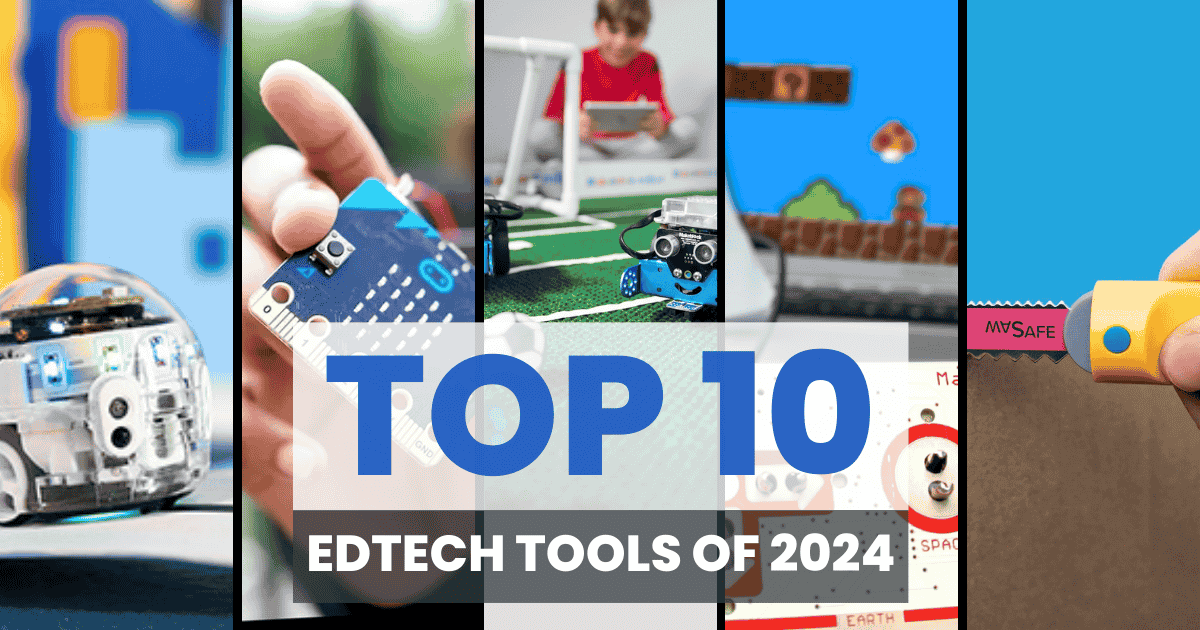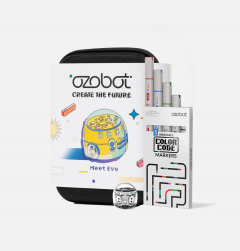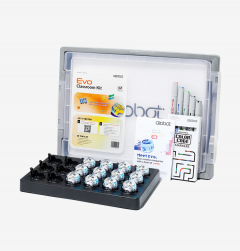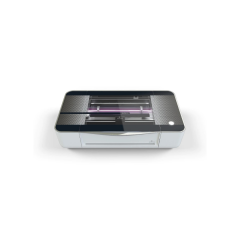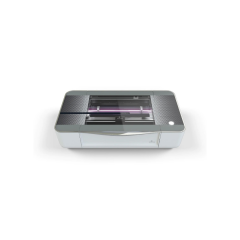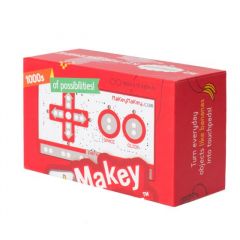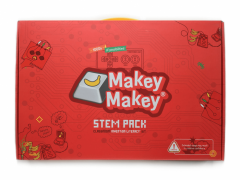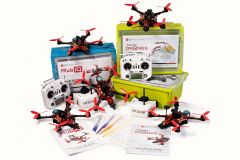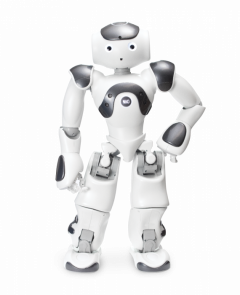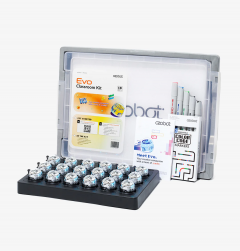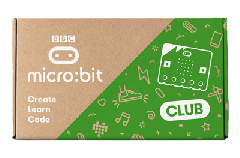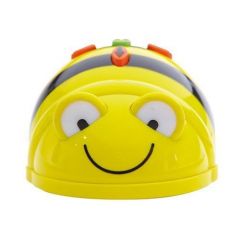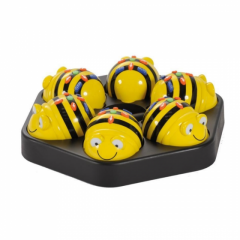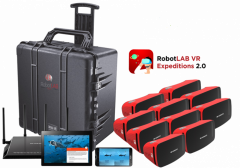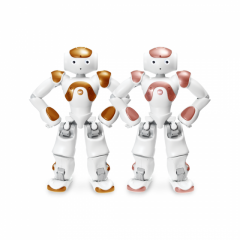How was your 2024? Ours was fab. We added some amazing new product lines to our online store, like 3Dux Design kits, which stretch kids' imagination with design challenges, and DARTdrones, a customizable drone piloting curriculum. We even attended a few conferences—if we saw you at AESA, PETE&C, or NYSCATE, hello! But among all the growth, one thing remained constant: the innovation of the Eduporium educator family. Last year, we helped provide equipment for student-led podcasts, cardboard mazes that robots could explore, and more. And now we’re excited to see where you take STEM education this year! If you’re not sure what project to tackle next, let us know and we’ll set you up with a free personalized consultation. Or, save time with some guidance using this list below. We’ve put together our review of these top 10 bestsellers from 2024—and why we think they made the list.
1. Ozobot
The Ozobot team's most recent additions remained popular this year as teachers used Color Code Magnet Kits to make screen-free coding easier and the Ozobot Crawler to take the Evo Robot farther. But the Ozobot Classroom Kits remain top of the line in educational STEAM tools, with opportunities for students to combine hands-on or block coding with any subject. Students simply draw color-coded paths for the Ozobot Evo to follow, then watch as the tiny robot spins, beeps, and explores based on their code.
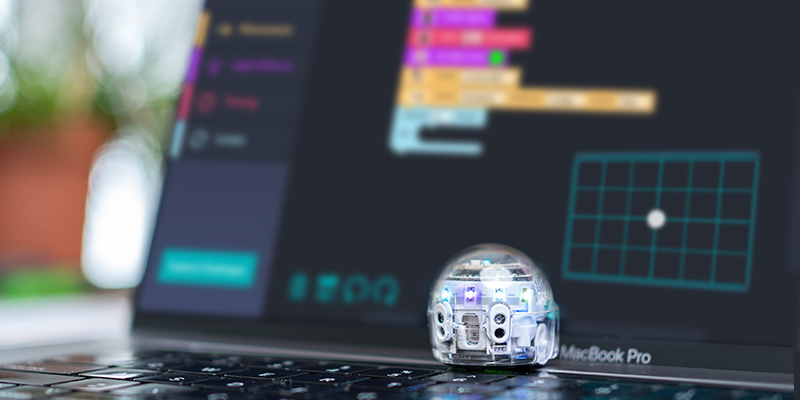
The Ozobot Evo can also handle Blockly programming through the app, which opens the door for more complex logic. Imagine kids creating mazes with conditional statements that make a robot thread its way between obstacles. Students can master coding basics like logic and problem-solving in no time as they delve into science, math, and even storytelling lessons. So, if you thought this tiny robot had limits, think again! The Evo Robot is a versatile learning tool, a platform for creative expression, and a gateway into the exciting world of STEM education.
2. Makeblock mBot
We love EdTech that can teach multiple letters in STEM at the same time, so the Makeblock mBot is one of our favorite tools. The standard mBot is a multi-purpose robotics solution that students can use from the elementary grades all the way through high school. Students start by building the mBot themselves using the included parts and tools, getting some engineering practice while familiarizing themselves with the robot's functions and parts. Then, they can use block-based or Python code to program mBot's sensors and precision motors.
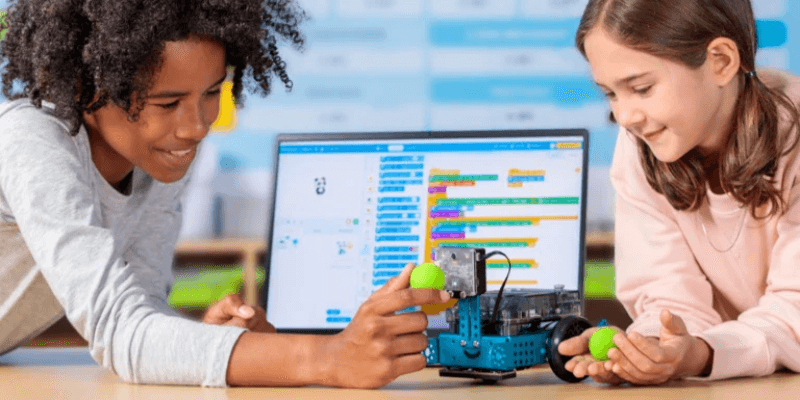
Or, students can use the mBot-S, the advanced version of the mBot, which comes with an LED matrix on which students can display images or messages by programming the different LEDs. Although students can create their own programs, just like they can with the standard mBot, the mBot-S also has three preset modes. Set the robot to avoid obstacles, follow lines, or respond to the manual remote controller. With just a screwdriver and the power of code, students can use the mBot to understand robotics, develop design thinking, and expand their logical minds.
3. Bee-Bot
Designed for Pre-K to second grade, this recognizable robot provides the perfect introduction to STEAM tools. Its sturdy design and friendly appearance make it engaging and welcoming for kids. Pressing its tactile buttons programs the Bee-Bot with up to 40 movement commands, teaching children about sequencing and programming logic. They can also string commands together to have their Bee-Bot navigate mazes and follow paths.
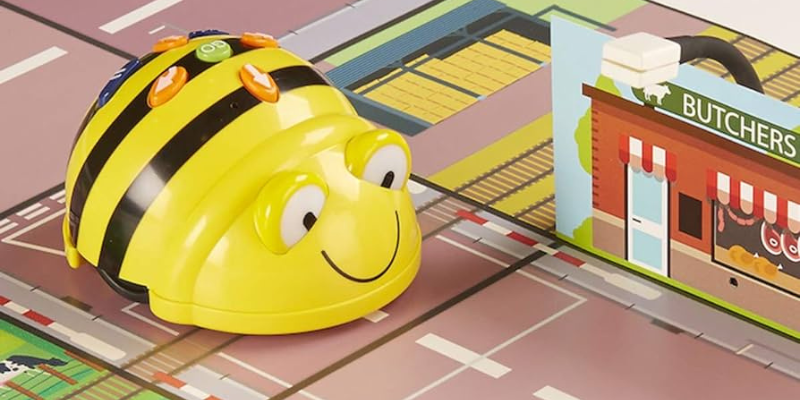
Perhaps the Bee-Bot can help you teach spelling as kids drive it to the next letter in a word. Or, it might reinforce math skills by following a number line. As kids experiment with commands and watch the Bee-Bot move, they'll learn to think logically, predict outcomes, and troubleshoot when things go wrong.
4. The micro:bit V2
Whether you are a true beginner dragging and dropping blocks or a seasoned programmer writing more advanced scripts, the micro:bit offers learning opportunities for all. With its built-in LED display, buttons, sensors, and expansion ports, the micro:bit is a STEAM tool kids can use to build all sorts of interactive projects. Kids can program it as, for example, a digital watch with animations or a game controller with light and sound effects.
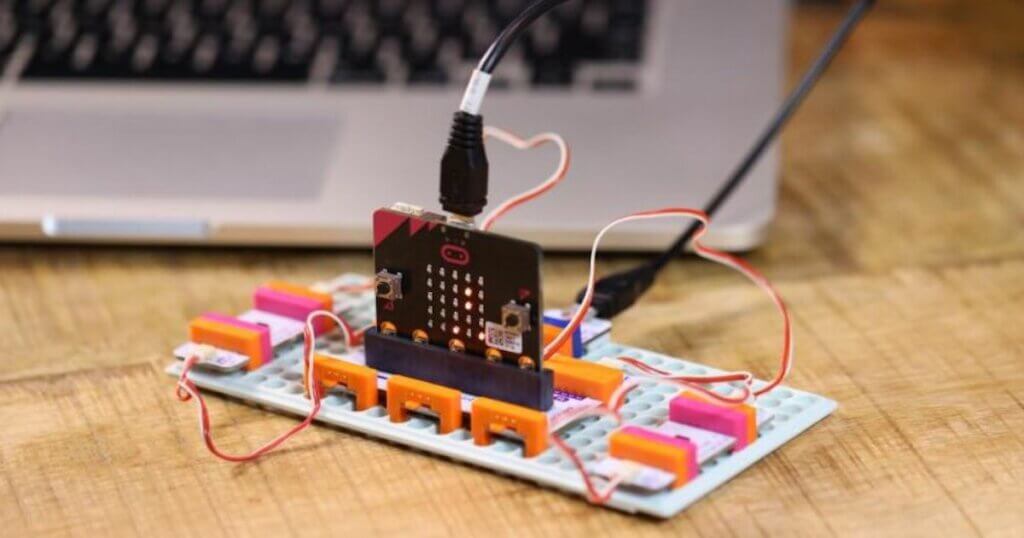
They could also collaborate in groups or work individually. Either way, the micro:bit is amazingly versatile and adaptable. Although its built-in features provide immediate functionality, children can also use its pins and connections to interact with motors and other accessories. Plus, it's compatible with many other makerspace and robotics tools, like the Strawbees kits and the Finch Robot, so students get to explore even more hands-on STEM.
5. Edison Robot
Programmable, durable, and LEGO-compatible, every Edison is equipped with pre-programmed functions that students can activate by placing it in front of custom barcodes. Their little robot can play tunes, follow lines, communicate with other Edisons, and more! It also supports user-friendly block coding languages like Blockly or Scratch—ideal for beginners to visually learn coding concepts like loops and conditionals.
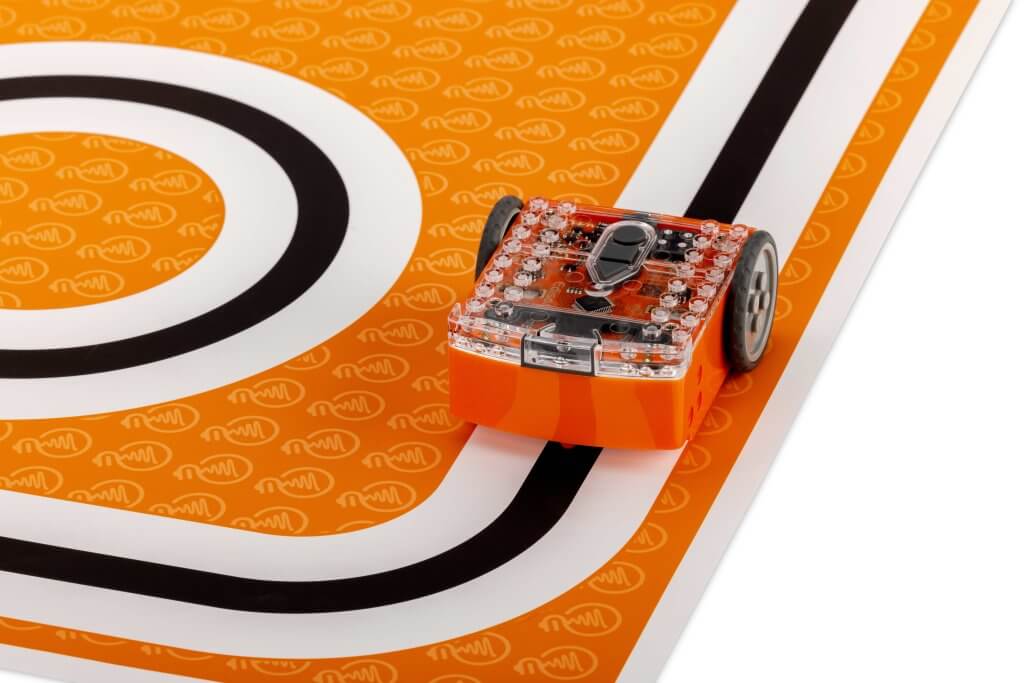
For more advanced students, the Edison can be programmed with Python, opening the door to a deeper understanding of coding principles. As of January 2024, the new Edison V3 has a rechargeable battery and USB programming capabilities, making it easier to keep learning going without interruptions.
6. Dobot Robotic Arms
The Dobot robotic arms are some of the most advanced robotic assistants for the classroom, with a lightweight desktop footprint, several programming options, and multiple attachments. Students can program the arms' actions with Blockly or use the drag-to-teach function—simply move the arm through the desired paths and press a button to confirm. Then, they can use various attachments to 3D print, grip objects, laser engrave, draw, and even do calligraphy! They can even attach the Dobot arms to a sliding rail to allow the robot a greater range of motion and broaden the scale of its abilities.
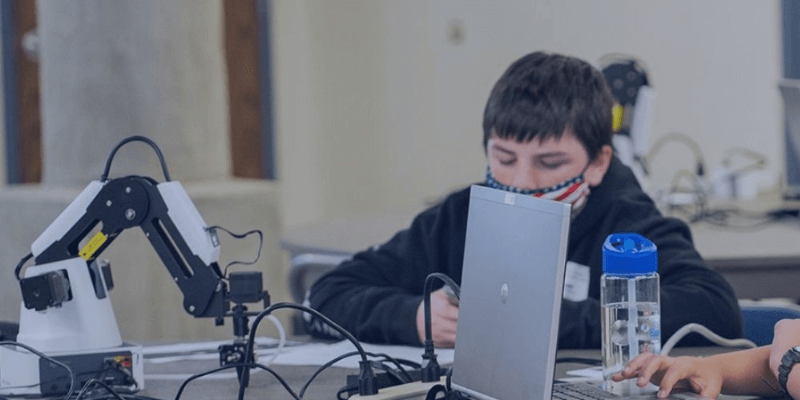
But what's the point of a robot arm without a learning objective? The accompanying Dobot curriculum divides learning into three stages, from beginner to advanced, and focuses on experiential, project-based learning. Students will learn programming and automation, understanding how robotic arms are used in fields from factory manufacturing to oceanography. The Dobot curriculum works in regular science classes or CTE settings, preparing students for an advancing world.
7. Makey Makey
Thanks to its student-friendly platform, the Makey Makey has remained one of the most popular EdTech tools for a decade. This go-to STEAM kit helps students expand their imaginations as they turn everyday objects into computer keyboards. Any conductive object can become a button as soon as it’s connected to one of the Makey Makey alligator clips. Students can turn bananas into piano keys, construct their own dance pad with aluminum foil, create interactive light-up drawings, and more, all while learning about key electronics principles. Plus, the Makey Makey only needs a tiny bit of conductivity to work and is super safe for kids, making it an invention kit for everyone!
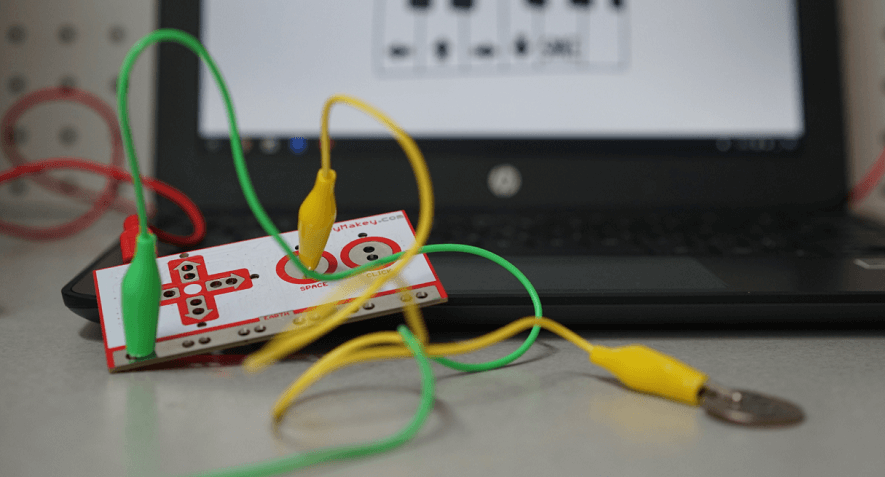
Last year's new Code-a-Key Backpack quickly became one of our best-sellers from the Makey Makey line. Combine a Makey Makey with a micro:bit for even more coding opportunities. The backpack's adapter board connects both devices, expanding Makey Makey's functions to include the micro:bit's motion, light, temperature, and sound sensors. Now, students can trigger actions and key presses in Makey Makey projects with all sorts of inputs.
8. Glowforge Pro
From delicate paper cut-outs to personalized metal engravings, the Glowforge 3D laser printers can turn everyday materials into unique projects. While they're student-safe, Glowforge printers are still quite powerful, carving limitless designs with lasers the width of a human hair.
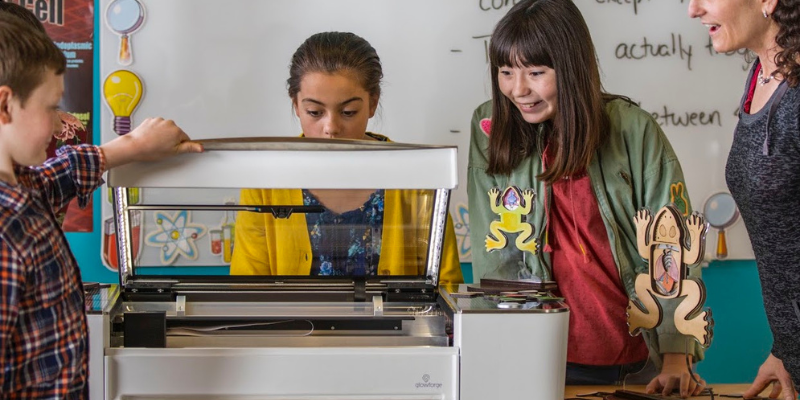
The Glowforge Pro stands out due to its Passthrough feature, which allows for printing on infinitely long materials. Students might make a shadowbox illustrating their book report, design a personalized card to bring home, or create innovative accessories for their cell phones. Glowforge printers are powerful tools for makers of all skill levels, including experienced makerspace directors or teachers new to MakerEd!
9. MakeDo Kits
Robots aren't the only way to gain valuable STEAM experiences. With the power of MakeDo tools, students can turn cardboard into all sorts of constructions. The kits come with kid-safe "scrus," cardboard saws, and perforators, which allow students to imagine and build anything that comes to mind. They might make Halloween costumes, illustrations for in-class projects, cardboard forts, and more.
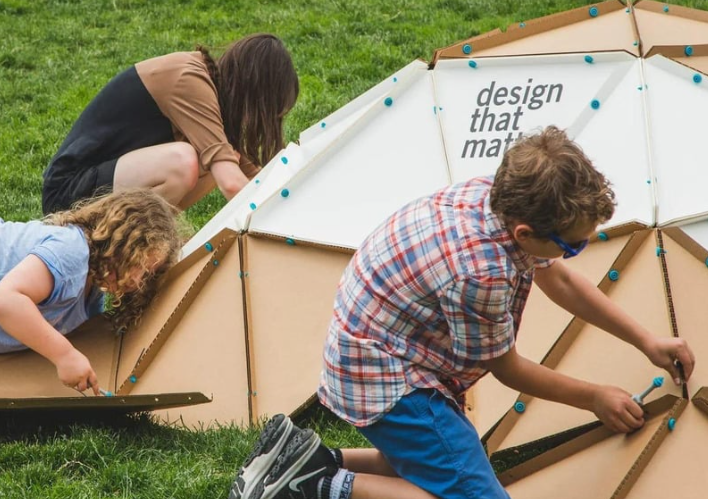
Using MakeDo tools, students will gain experience with designing truly functional builds. Sure, they can imagine all sorts of ideas, but when it comes to actual construction, they have a lot to learn. With practice, they'll gain skills in design and engineering that will last them into the future. They'll also learn the importance (and possibilities) of recycling, since many of their projects will come from upcycled cardboard. MakeDo is perfect for screen-free learning that boosts kids' creativity, imagination, and environmental awareness.
10. Snap Circuits
By the time they're done working with Snap Circuits, students will be able to describe how a circuit works, modify existing circuits, and design their own circuits. Interested? These kits, popular among both teachers and parents, include everything you need to build a foundation in electronics for kids in grades 3–5. With all sorts of different options, kids can use Snap Circuits to learn principles of motion, 3D illumination, green energy, and more!
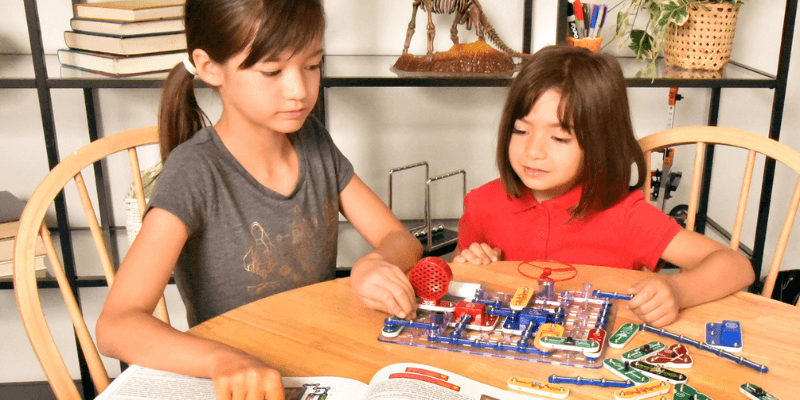
Instructors also get their own benefits, like student workbooks and curriculum guides in the STEM Classroom Activity Kit. The 10 days of lessons are NGSS-aligned and provide open-ended challenges for teachers to assign. Although the kits are based in science, they also align with common core Math and ELA standards, demonstrating the interdisciplinary applications of circuitry and STEM!
Looking ahead to 2025
We love the STEAM tools that dominated 2024, but who knows what could happen this year. Although the rise of AI has continued to shake up the world of education, it seems like screen-free STEM activities are maintaining their hold in classrooms. To stay informed on what’s new in EdTech, subscribe to our newsletter to get news right in your inbox. You can also follow us on Twitter (X) and Instagram or contact us with questions! Also, don’t forget to apply for our monthly grant to add innovative tools into your classroom.



